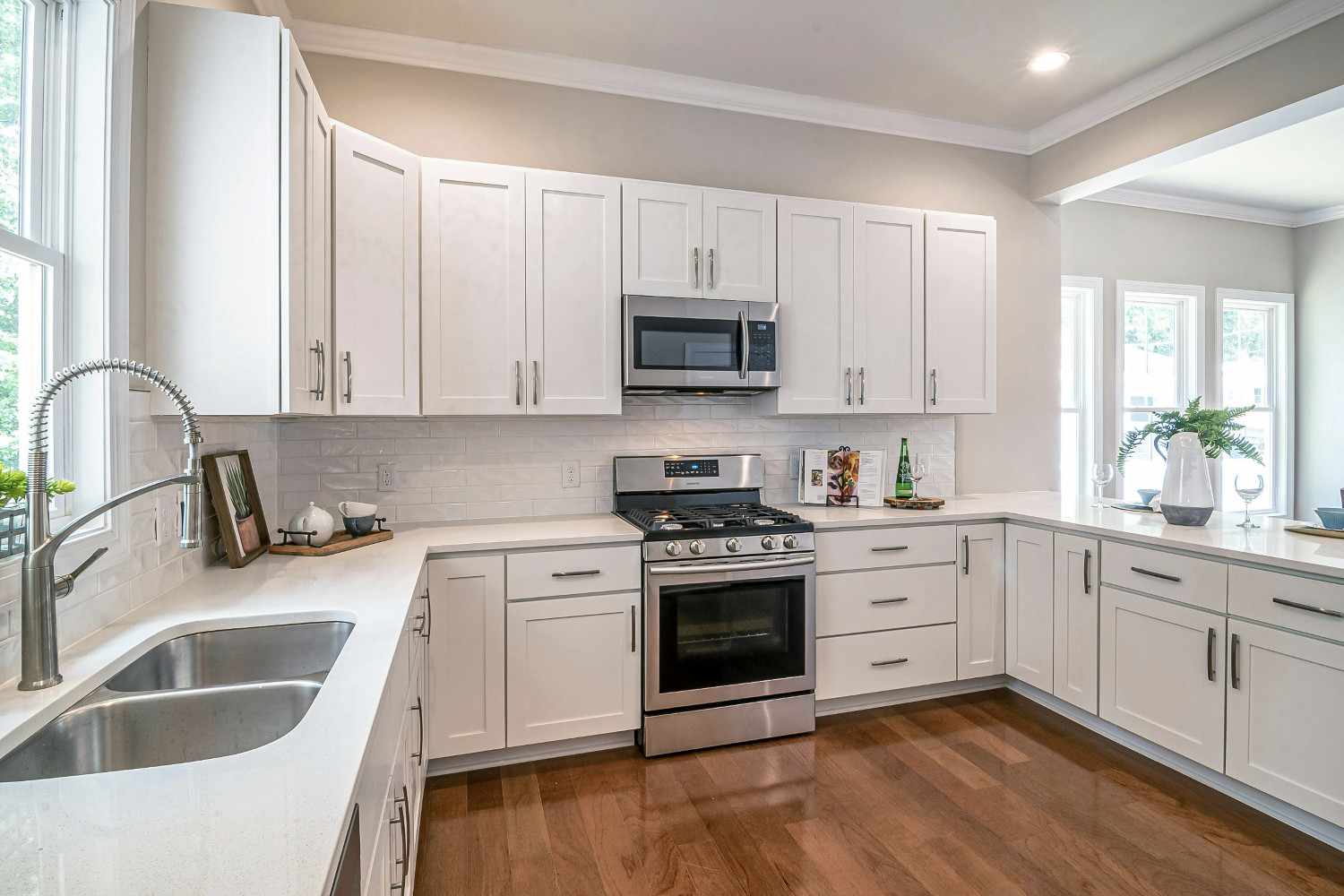VA Loans: What Are They?
VA loans are a kind of government-backed mortgage option available for service members, Veterans, and their surviving spouses. They are government-backed by the U.S. Department of Veterans Affairs, but made by private mortgage lenders such as banks and mortgage companies.
VA loans, also sometimes referred to as VA home loans or VA mortgages, can be used to purchase, renovate, or refinance a home whether it be a single-family home, condominium, multi-unit property, manufactured house or new construction. They offer many benefits compared to traditional loans offered by mortgage companies, credit unions, and private banks – making VA loans a great mortgage option with significant benefits for Veterans and service members.
The VA guarantee is a governmental pledge that should the borrower of the VA loan default, the government would repay a portion on their behalf. This provides confidence for lenders who are servicing those who may not traditionally qualify for home loans.
The Benefits of VA Loans
- 0% Down Payment: This is the key benefit of VA loans. Qualified borrowers can make a purchase without a down payment, no matter the value of the home they’re purchasing. In fact, almost 90% of VA loans are made with $0 down.
- Lower Interest Rates: VA loans have different interest rates than other loans; for the past two years, they’ve had the lowest average rate across the market. Lower interest rates means that veterans can qualify for larger loans; as a result, they save on both monthly payments and for the entire duration of the loan.
- Flexible Credit Guidelines: VA loans were designed to promote home ownership among service members, Veterans, and their surviving spouses; these loans have more flexible terms, such as lower credit score requirements. These forgiving underwriting guidelines mean that more people will have access to home ownership opportunities.
- Closing Cost Limits: Lenders are limited as to how much they can charge Veterans for loan origination and processing.
Who Is Eligible For A VA Loan?
Veterans and service members must meet basic time-in-service and character of service requirements to be eligible for a VA home loan. Some surviving spouses also have VA loan eligibility. The following groups are eligible for VA loans:
- Veterans: Veterans who have served a minimum period of active duty, which varies depending on when they served, are eligible for VA loans.
- Active-Duty Service Members: Current members of the military can also take advantage of VA loans. Generally, you can be eligible for a VA loan if you served 90 consecutive days on active duty (wartime) or 181 consecutive days on active duty (peacetime).
- National Guard and Reserve Members: Members of the National Guard and Reserves may also be eligible if they have served for a sufficient period or if they were activated for federal service. This includes 6 years in the Guard or Reserve, or 90 days under Title 32 orders (at least 30 of those days must be served consecutively).
- Surviving Spouses: The surviving spouses of veterans or service members who died in the line of duty or from a service-related disability may also be eligible.
- Native American Veterans: Native American Veterans have access to the Native American Direct Loan (NADL) Program, which helps eligible Native American Veterans finance the purchase, construction, or improvement of homes on Federal Trust Land.
The full list of eligibility criteria can be found here.
What Are The Qualifications For A VA Loan?
You or your spouse must meet the following criteria to qualify for a VA mortgage:
- Service Requirements: Veterans, active-duty service members, National Guard members, reserve, and surviving spouses of veterans are eligible for VA loans. There are specific criteria and minimum requirements based on when you served.
- Certificate of Eligibility (COE): This certificate indicates that your service history and duty status qualify you for a home loan benefit. You can apply for a COE by mail or online; alternatively, your lender can obtain it for you.
- Credit and Income Requirements: Although your loan is backed by the VA, your lender has criteria that you’ll still need to meet. These requirements are likely based on your credit score and income.
In addition to having a Certificate of Eligibility (COE), Veterans need to meet both VA and lender guidelines related to things like credit score, debt-to-income ratio and more. Remember, each lender might have its own specific qualifications and requirements in addition to the VA’s requirements.
VA loans offer several benefits such as no down payment, lower interest rates, and no private mortgage insurance requirement, making them an attractive option for those who qualify. However, like any financial product, it’s important to understand all the terms and conditions before deciding if it’s the right choice for you.
How Do VA Loans Work?
With a few exceptions, VA loans work similarly to other loan options. Here’s a step-by-step guide of the VA loan process:
- Eligibility: The first step is to find out if you’re eligible for a VA loan. This includes obtaining a Certificate of Eligibility (COE), which indicates that your duty status and service history meet the loan requirements. Lenders will ask for this information before beginning the process.
- Choose A Lender: While the VA guarantees a portion of your loan, VA loans are issued by private lenders. Your ideal lender depends on your individual needs and it’s a good idea to consult with multiple lenders before deciding.
- Choose A Real Estate Agent: We recommend working with a real estate agent who’s familiar with the VA loan process.
- Find A Home: Make sure the home aligns with your budget and meets your needs.
- Purchase Agreement: After you choose a home, your real estate agent will assist you with making an offer. Ensure that your contract includes the “VA Escape Clause” or “VA Option Clause”; this permits you to void the contract should the property appraise for a different price than that on the contract.
- Loan Processing: Your lender will process the loan. This includes verifying your credit, completing a VA home appraisal, and confirming your income.
- Loan Closing: Should everything check out, you’ll sign the loan documents and officially become a homeowner.
The History of VA Loans
1940s VA Loans:
In the 1940s, the VA mortgage program, established under the Servicemen’s Readjustment Act of 1944 or the GI Bill, aimed to alleviate the challenges faced by World War II veterans upon their return to civilian life. This comprehensive legislation, signed by President Franklin D. Roosevelt, offered various benefits including mortgage assistance, unemployment compensation, and education programs. Recognizing the disparity between the financial positions of veterans and civilians, the government prioritized homeownership as a key component of veteran readjustment. Instead of providing cash, the government opted for a more sustainable approach through loan guarantee.
Initially, these VA loans were exclusively available to World War II veterans who had served a minimum of 90 days in the war and applied within two years of military separation or the war’s end. Veterans could use the benefit until September 16, 1950. However, challenges emerged as rising home prices outpaced the $2,000 loan cap set by the VA. Consequently, Congress made amendments in 1945, doubling the loan cap, extending the loan term, and widening the purchasing window for VA mortgages
1950s-1960s VA Loans:
In the 1950s and 1960s, further adjustments were made to the VA loan program to account for inflation and extend access to surviving spouses and Korean War veterans. In 1966, the program underwent another series of changes, this time part of the Veterans Readjustment Benefits Act, or the “Cold War GI Bill.” This extended the benefits to post-Korean War veterans and also introduced the VA Funding Fee to cover potential defaults.
1970s VA Loans:
The 1970s saw significant changes as President Richard Nixton enacted the Veterans Housing Act of 1970. This eliminated the expiration date on benefit use; as a result, 9 million World War II and Korean War Veterans regained access to the VA loan program. This act also added a refinance feature to the program and expanded loan coverage to include condominiums and mobile homes.
The Veterans Housing Act of 1974 brought about another wave of change, notably allowing veterans to restore their loan entitlement even after using their benefit. This meant that 4 million Veterans regained loan access. Other changes included automatic processing of VA loans, a grant increase from $17,500 to $25,000, and the elimination of farm and business loans from the program. In 1978, energy-efficient improvement grants were also approved; this includes property changes such as solar heating.
1980s VA Loans:
The 1980s brought refinements to eligibility criteria, funding fee adjustments, and an increase in the loan guarantee. In 1987, the loan guarantee was raised to $36,000 due to the Public Law 100-198. This legislation also altered the VA loan refinance option; veterans needed to show only previous property occupancy to receive a loan. By this point, widowed spouses could now meet occupancy requirements for all types of VA loans. In 1989, the Veterans Administration became a Cabinet-level department which we know today as the Department of Veterans Affairs.
1990s VA Loans:
In 1992, the Veterans Home Loan Program Amendments of 1992 changed the funding fee and eligibility. Gulf War veterans were included, and eligibility criteria were further refined, including National Guard and Reserve service members. Additionally, energy-efficient mortgages were permanently integrated into the VA loan program.
2000s VA Loans:
During the 2000s, the VA loan program gained prominence amidst the housing crisis, offering more accessible credit compared to conventional lenders. The VA guaranteed 133,000 loans in 2007, up to 314,000 in 2010, and then a whopping 630,000 loans in 2013. That same year, the VA celebrated its 20 millionth home loan, which was received by Iraq War Army Captain Matt Carpenter’s widow.
Present-Day VA Loans:
Today, as the VA loan program commemorates its 80th anniversary, its impact extends beyond veteran assistance to influencing liberalized terms in the broader mortgage market.
Key Features of VA Loans
- 0% Down Payment: This is the key benefit of VA loans. Qualified borrowers can make a purchase without a down payment, no matter the value of the home they’re purchasing. In fact, almost 90% of VA loans are made with $0 down.
- Lower Interest Rates: VA loans have different interest rates than other loans; for the past two years, they’ve had the lowest average rate across the market. Lower interest rates means that veterans can qualify for larger loans; as a result, they save on both monthly payments and for the entire duration of the loan.
- Flexible Credit Guidelines: VA loans were designed to promote home ownership among service members, Veterans, and their surviving spouses; these loans have more flexible terms, such as lower credit score requirements. These forgiving underwriting guidelines mean that more people will have access to home ownership opportunities.
- Closing Cost Limits: Lenders are limited as to how much they can charge Veterans for loan origination and processing.
How Do VA Loans Work?
With a few exceptions, VA loans work similarly to other loan options. Here’s a step-by-step guide of the VA loan process:
- Eligibility: The first step is to find out if you’re eligible for a VA loan. This includes obtaining a Certificate of Eligibility (COE), which indicates that your duty status and service history meet the loan requirements. Lenders will ask for this information before beginning the process.
- Choose A Lender: While the VA guarantees a portion of your loan, VA loans are issued by private lenders. Your ideal lender depends on your individual needs and it’s a good idea to consult with multiple lenders before deciding.
- Choose A Real Estate Agent: We recommend working with a real estate agent who’s familiar with the VA loan process.
- Find A Home: Make sure the home aligns with your budget and meets your needs.
- Purchase Agreement: After you choose a home, your real estate agent will assist you with making an offer. Ensure that your contract includes the “VA Escape Clause” or “VA Option Clause”; this permits you to void the contract should the property appraise for a different price than that on the contract.
- Loan Processing: Your lender will process the loan. This includes verifying your credit, completing a VA home appraisal, and confirming your income.
- Loan Closing: Should everything check out, you’ll sign the loan documents and officially become a homeowner.
Types of VA Loans
There are four types of VA mortgages:
- VA-Backed Purchase Loan: This is the most common form of VA loan for buying a home. These loans are favored over conventional mortgages for their lower costs and flexible terms.
- VA-Backed Loans: These are similar to the previous VA loan; in addition to buying homes, these loans can also be used to refinance, renovate, and build a home.
- Native American Direct Loan (NADL): This type of VA loan is designed for veterans, as well as their spouse, who are Native Americans.
- VA Direct Loan: This VA loan comes directly from the VA and is typically used for veterans who may be unable to receive a loan anywhere else.
Remember, each of these loan types has its own eligibility requirements and benefits. It’s important to understand these before deciding which type of VA loan is best for you. If you’re unsure, consider speaking with a VA loan specialist or a financial advisor. They can help guide you through the process and make sure you choose the loan that’s right for your situation.
The Top 6 VA Mortgage Lenders
- Veterans United: Known for its customer service and loan options.
- USAA Mortgage: Specializes in financial products for current and former military members and their families.
- Navy Federal Credit Union: One of the nation’s top VA lenders by volume and a specialist in serving members of the military.
- Defy Mortgage: Renowned for its innovative, custom solutions and while-glove service to meet each client’s unique needs.
- Rocket Mortgage: Known for its online process and one of the country’s largest VA mortgage lenders by volume.
- Loan Depot: Combines a robust online presence with over 200 branches located throughout the U.S.
Please note that the best lender for you will depend on your specific circumstances, including your credit score, down payment, and personal preferences.
How to Calculate a VA Mortgage Payment
There are multiple VA loan payment calculators available online. Your payment will depend on a few factors:
- The Expected Cost Of The House: This is the purchase price of the home you’re planning to buy.
- The Amount You Are Willing To Make As A Down Payment: With a VA loan, you can choose not to make a down payment. However, putting money down upfront would reduce your monthly payments.
- Interest Rates: This is the annual interest rate for your loan.
- Loan Term: This is the length of time you have to repay the loan, typically 15 or 30 years.
- Whether Or Not It Is Your First Time Borrowing A VA Loan: If it’s not your first time, you might have to pay a slightly higher VA funding fee.
Formulas:
- To calculate your monthly payment, add your principal/interest, property taxes, and insurance: Total Monthly Payment = Principal and Interest + Property Taxes + Insurance
- To calculate your total loan amount, add your base loan amount and your VA funding fee: Total Loan Amount: Base Loan Amount + VA Funding Fee
Who Would Benefit From A VA Loan?
VA loans are designed to benefit the following groups:
- Veterans: Veterans who have served a minimum period of active duty, which varies depending on when they served, are eligible for VA loans.
- Active-Duty Service Members: Current members of the military can also take advantage of VA loans.
- National Guard and Reserve Members: Members of the National Guard and Reserves may also be eligible if they have served for a sufficient period or if they were activated for federal service.
- Surviving Spouses: The surviving spouses of veterans or service members who died in the line of duty or from a service-related disability may also be eligible.
- Native American Veterans: Native American Veterans have access to the Native American Direct Loan (NADL) Program, which helps eligible Native American Veterans finance the purchase, construction, or improvement of homes on Federal Trust Land.
VA loans offer several benefits such as no down payment, lower interest rates, and no private mortgage insurance requirement, making them an attractive option for those who qualify. However, like any financial product, it’s important to understand all the terms and conditions before deciding if it’s the right choice for you.
What Is The Difference Between VA Mortgages and Conventional Mortgages?
VA loans and conventional loans are two different types of mortgage loans with distinct features:
- Government Backing: VA loans are backed by the U.S. Department of Veterans Affairs, which guarantees a portion of the loan. This government backing reduces the risk for lenders, allowing them to offer more favorable terms. On the other hand, conventional loans are not backed by the government.
- Down Payment: VA loans allow for 100% financing, meaning eligible borrowers can buy a home with no down payment. Conventional loans typically require a down payment, often at least 3%.
- Private Mortgage Insurance (PMI): VA loans do not require PMI, even if the down payment is less than 20%. Conventional loans usually require PMI when the down payment is less than 20%.
- Funding Fee: VA loans require an upfront funding fee, which can range from 0.5% to 3.6% of the loan amount. Conventional loans do not have this fee.
- Loan Limits: VA loans have no loan limits, while conventional loans do have limits.
- Eligibility: VA loans have specific eligibility requirements related to military service. Conventional loans do not have these service-related requirements.
- Property Type: Conventional loans can be used to buy primary residences, second homes, and investment properties. VA loans are generally only for primary residences.
- Interest Rates: VA loans typically offer lower interest rates compared to conventional loans.
VA Mortgage Loan Terms
VA mortgage loan terms can vary, but here are some common features:
- Loan Term: Most lenders offer VA loans with 10-, 15-, 20-, 25- or 30-year terms.
- Interest Rate: The interest rate can be fixed or adjustable. The rate is usually lower than the rate charged on other types of mortgage loans.
- Down Payment: No down payment is required unless mandated by the lender, or if the purchase price is more than the reasonable value of the property.
- Private Mortgage Insurance (PMI): There is no PMI requirement.
- Closing Costs: VA rules limit the amount you can be charged for closing costs.
- Prepayment: There is no prepayment penalty if the borrower pays off the loan early.
- Loan Assumption: VA loans are assumable. However, for loans closed on or after March 1, 1988, the assumption must be approved in advance by the lender or VA.
VA Mortgage Interest Rates
As for the interest rates, they can vary based on a number of factors, including the lender, your credit score, and current market conditions. In general, VA loan rates are lower than conventional loan rates.
**Please note that these rates can fluctuate daily, so it’s always a good idea to check with your lender for the most current rates.
The specific rate you’re offered depends on a number of factors, including your individual credit and finances. It’s always a good idea to shop around and compare loan terms from several different lenders before choosing a loan.
Pros and Cons of VA Loans
Pros:
- No Down Payment: VA loans allow eligible veterans and service members to purchase a home without a down payment.
- No Private Mortgage Insurance (PMI): Unlike conventional loans, VA loans do not require PMI, which can save borrowers money.
- Competitive Interest Rates: VA loans often offer competitive interest rates.
- Flexible Credit Requirements: VA loans are more forgiving of credit issues compared to some other loan types.
- No Prepayment Penalties: Borrowers can pay off their VA loan early without penalties.
- Assistance for Disabled Veterans: VA loans provide additional benefits for disabled veterans.
- Options for Veterans: More accessible and affordable options for those who have served or are currently serving in the U.S. military, including spouses of those who have served.
Cons:
- Funding Fee: VA loans require a funding fee, which varies based on factors like down payment and military service type.
- Property Eligibility: VA loans are for primary residences, and certain property types (e.g., investment properties) are not eligible.
- VA Appraisal Process: The VA appraisal process can be more stringent, ensuring the property meets certain standards.
- Limited Jumbo Loan Options: VA loans have limits on the loan amount, which may not cover high-cost areas.
- Seller Concessions: Some sellers may be hesitant to accept offers with VA loans due to misconceptions about closing costs.
- Non-Occupant Co-Borrowers: VA loans do not allow non-occupant co-borrowers (e.g., parents) to help qualify.
Alternatives to VA Loans
- FHA Mortgages require a minimum down payment of 3.5% of the purchase price and a minimum credit score of 580, but some lenders may require 620+. There are no prepayment penalties for these QM loans.
- USDA Mortgages are QM loans designed for rural and suburban homebuyers. Income limits do apply, but there’s no down payment required.
- Conventional Mortgages are available for all borrowers. They have various down payment options but stricter credit requirements.
- Non-Qualified Mortgages (non-QM loans) are mortgage options for creditworthy borrowers who don’t meet traditional lending requirements. This means that non-QM loans allow lenders to be more flexible with their standards and requirements for borrowers.
FAQ
1. What is a VA Loan?
A VA loan is a mortgage specifically available for service members, Veterans, and their surviving spouses. They can be used to purchase, build, renovate, and refinance a home. These loans are government-backed by the U.S. Department of Veterans Affairs.
2. How do VA loans work?
All in all, VA loans work like other conventional loan options. However, there are extra steps for eligibility, such as a Certificate of Eligibility, and contract clause considerations.
3. Who Should Get A VA Mortgage?
VA loans can be a good option for veterans, active-duty service members, National Guard and Reserve members, surviving spouses, and Native American veterans.
4. What are the pros of VA loans?
VA loans don’t require a down payment or private mortgage insurance (PMI). They have competitive interest rates, flexible credit requirements, and assistance for disabled veterans.
5. What are the cons of VA loans?
VA loans have stricter property eligibility requirements and a stringent process. They don’t allow non-occupant co-borrowers to help qualify and sellers may be hesitant to accept VA loan offers. There is a funding fee and there are limits on loan amounts.
6. Which documents do you need to provide for a VA loan?
The most important documentation is the Certificate of Eligibility (COE), which verifies your service history and duty status. Lenders will also ask for credit score and income information, among other things.
7. How long does it take to close a VA loan?
You can expect your VA loan to close within 40 to 50 days. This timeline is pretty standard for the mortgage industry, regardless of the type of financing.
8. Can you refinance a VA Loan?
Yes; there are two refinancing options available for VA loans:
VA Streamline Refinance (IRRRL) allows you to change your mortgage rate and monthly payments. This is available for VA-backed mortgages. There is a .5% VA funding fee which may be rolled into the new loan.
VA Cash-Out Refinance enables you to take cash out of your existing home equity. It’s available for both VA and non-VA home loans. The VA funding fee is dependent on whether you’ve used this before; it’s 2.3% for the first use and 3.6% for subsequent uses paid upfront.
9. Where can I get a VA Mortgage?
Many services offer VA mortgages, including Veterans United, USAA Mortgage, Navy Federal Credit Union, Rocket Mortgage, and Loan Depot.
10. Can you get a VA Mortgage If You’re Self-Employed?
Yes, in most cases, self-employed applicants can qualify for a VA loan. Self-employment includes scenarios like sole ownership of a business, owning at least 25% of a business, freelance work, or contract work. You’ll need two years of tax returns and other critical business documents to verify your income.
11. What are the interest rates for VA loans?
Like other loans, interest rates vary for VA loans. However, they are generally lower than conventional interest rates.
12. How big of a down payment do I need for a VA loan?
VA loans do not require a down payment.
13. Can I get a VA loan for an investment property?
No; VA loans are available solely for residential properties where the veteran/spouse will be living full-time.
14. Are VA loans QM loans?
VA loans are considered qualified mortgages (QM). They fall under the safe harbor QM category, regardless of factors like the loan’s APR or debt-to-income ratio (DTI). This designation provides additional protection for borrowers and lenders.
15. What is a QM loan?
Qualified Mortgages are considered “traditional mortgages” with less risky features and traditional verification methods.
16. Can I use my VA eligibility more than once?
Yes, you can use your VA loan eligibility more than once. There is no maximum or limit on how many times you can use a VA loan. As long as you have remaining entitlement, you typically always have the option to obtain another VA loan.
Veterans and active military members who meet the program’s service requirements have what’s known as VA loan entitlement. VA entitlement is a specific dollar amount the VA promises to repay to a lender if the Veteran defaults on the loan. Qualified borrowers have two levels of entitlement – basic and bonus. Whenever a Veteran purchases a home, they apply some or all of their entitlement to the loan.
Please note that you’ll pay a slightly higher VA funding fee for a second VA mortgage. Also, each time you apply for a VA loan, you’ll need to obtain a new Certificate of Eligibility (COE) from the VA.
If you’re ready to check your remaining entitlement, a trusted home loan specialist can assess your situation and guide you through your next home-buying journey.
17. What are the credit requirements?
Given that VA loans were designed to improve homeownership among service members, they have more flexible terms, including lower credit score requirements.
18. Are VA loans safe?
VA loans are generally considered safe for eligible veterans and military families. The Department of Veterans Affairs (VA) guarantees a portion of the loan, reducing risk for lenders. Next, VA loans allow homebuyers to purchase without a down payment. They also offer competitive interest rates. Plus, there are minimum property requirements (MPRs); VA appraisals ensure properties meet safety and structural standards. Finally, unlike some other loans, VA loans do not require ongoing mortgage insurance.







